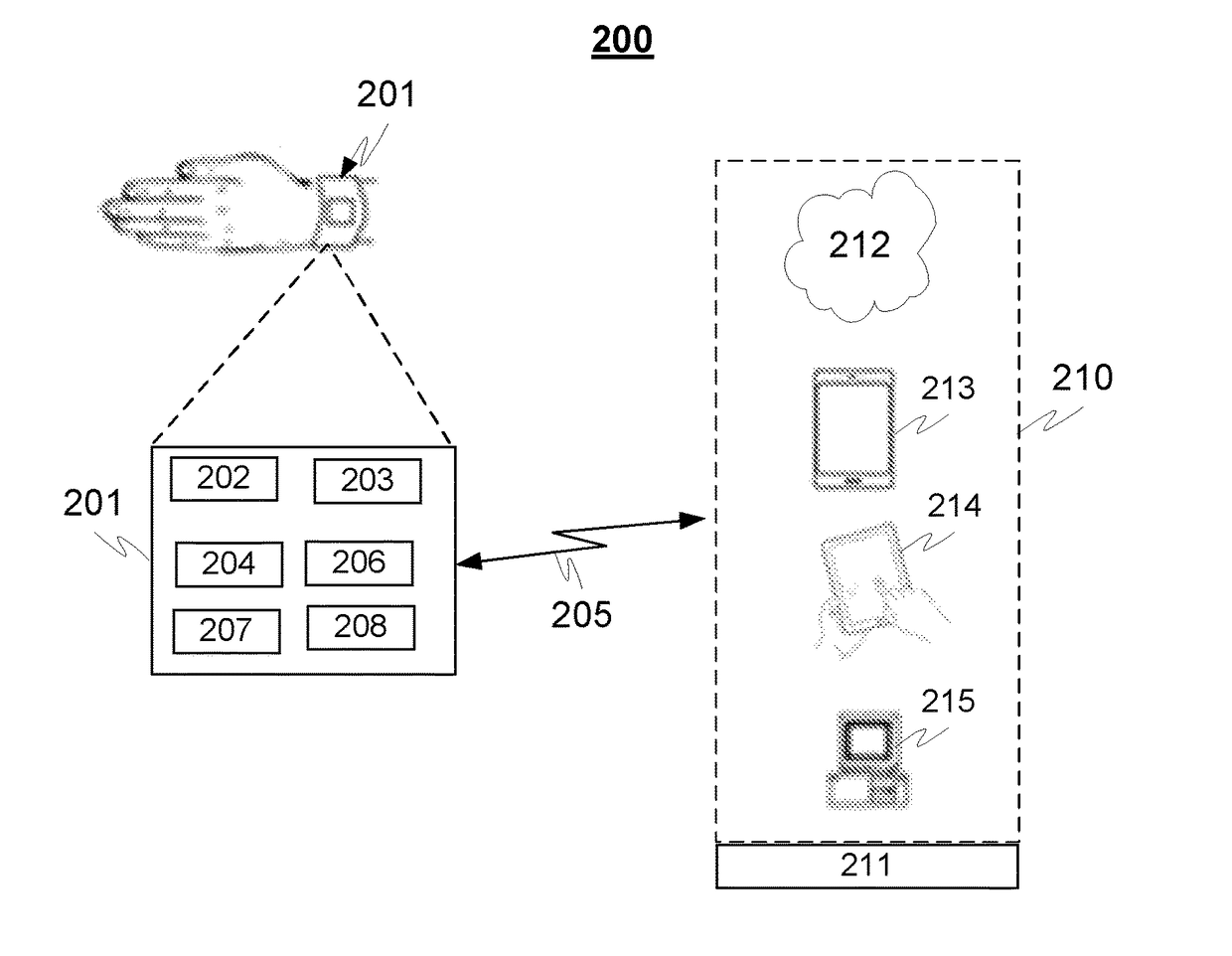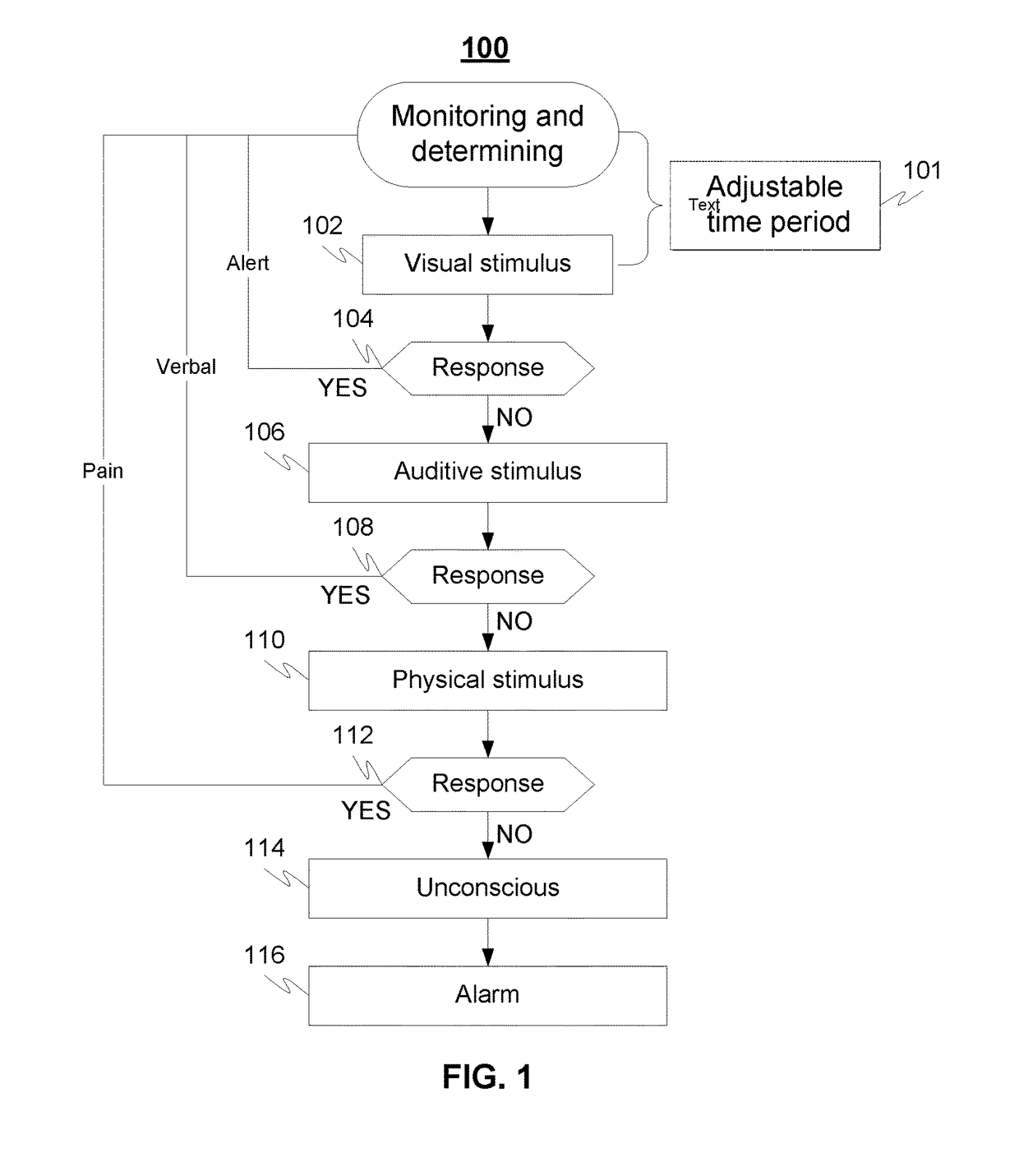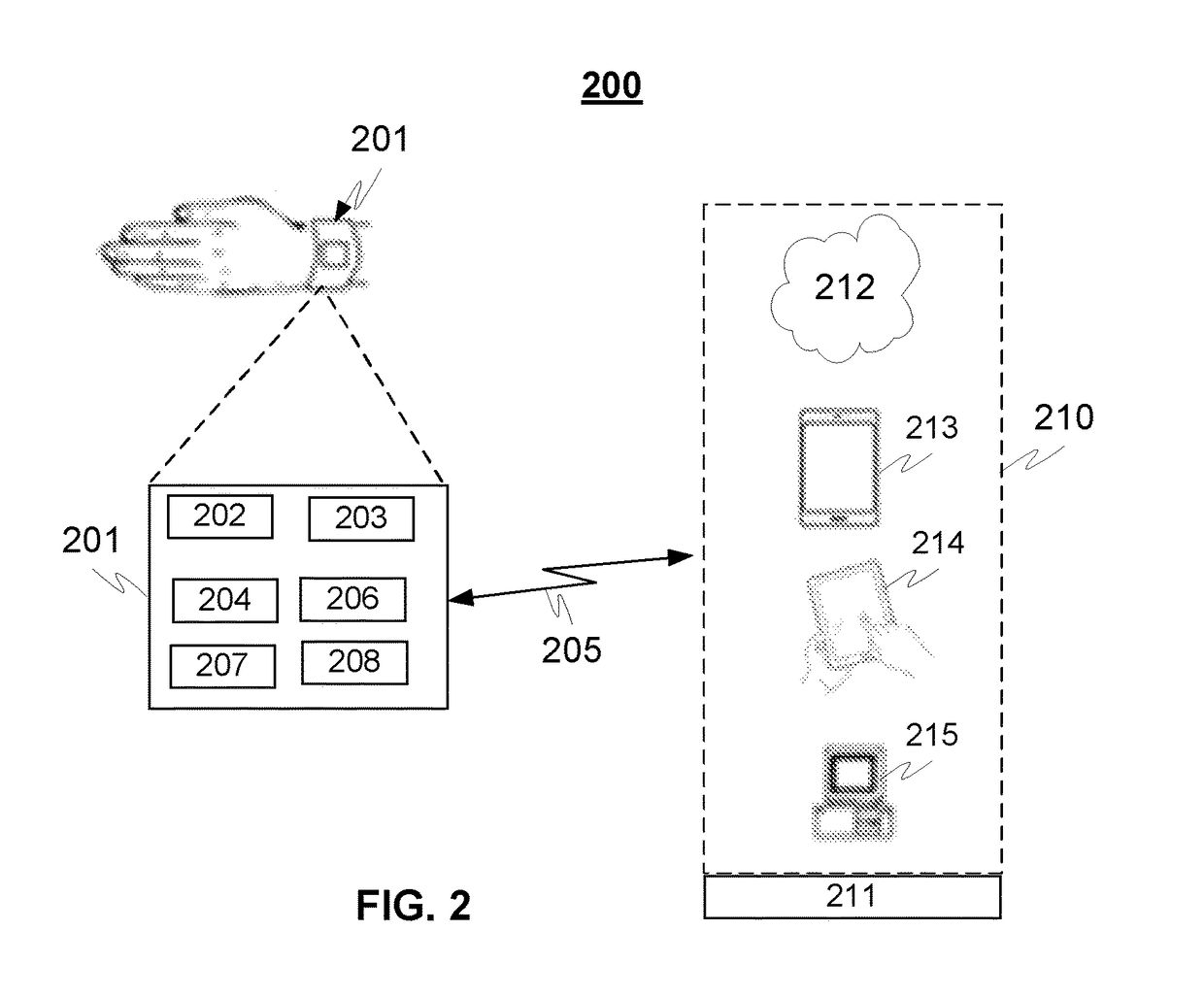Device and Method for Determining a State of Consciousness
device technology, applied in the field of devices and methods for determining a state of consciousness, can solve the problems of increased heart rate, decreased removal, and impaired gas exchange, and achieve the effect of limited healthcare resources and any significant discomfort for patients
- Summary
- Abstract
- Description
- Claims
- Application Information
AI Technical Summary
Benefits of technology
Problems solved by technology
Method used
Image
Examples
Embodiment Construction
[0024]FIG. 1 illustrates a principle of an exemplary sequence 100 of consciousness monitoring according to an advantageous embodiment of the invention, and FIG. 2 illustrates an exemplary arrangement 200 and device 201 for determining the state of a human being according to an advantageous embodiment of the invention. The arrangement 200 and / or the device 201 are advantageously configured to implement the steps method 100.
[0025]The device 201 may be located at the chest, wrist or other parts of the human body. Advantageously it is a wristband device. The device 201 contains a light source 202, a sound generator 203 and a mechanical vibrator 204, which are advantageously digitally adjustable, based for example a controlling commands received from the data processing device 211 of the backend 210. In addition the device comprises a feedback or acknowledge detection device 207, such as an accelerometer or a button to be pressed as a response to the stimuli or the like. The acceleromete...
PUM
 Login to View More
Login to View More Abstract
Description
Claims
Application Information
 Login to View More
Login to View More - R&D
- Intellectual Property
- Life Sciences
- Materials
- Tech Scout
- Unparalleled Data Quality
- Higher Quality Content
- 60% Fewer Hallucinations
Browse by: Latest US Patents, China's latest patents, Technical Efficacy Thesaurus, Application Domain, Technology Topic, Popular Technical Reports.
© 2025 PatSnap. All rights reserved.Legal|Privacy policy|Modern Slavery Act Transparency Statement|Sitemap|About US| Contact US: help@patsnap.com



